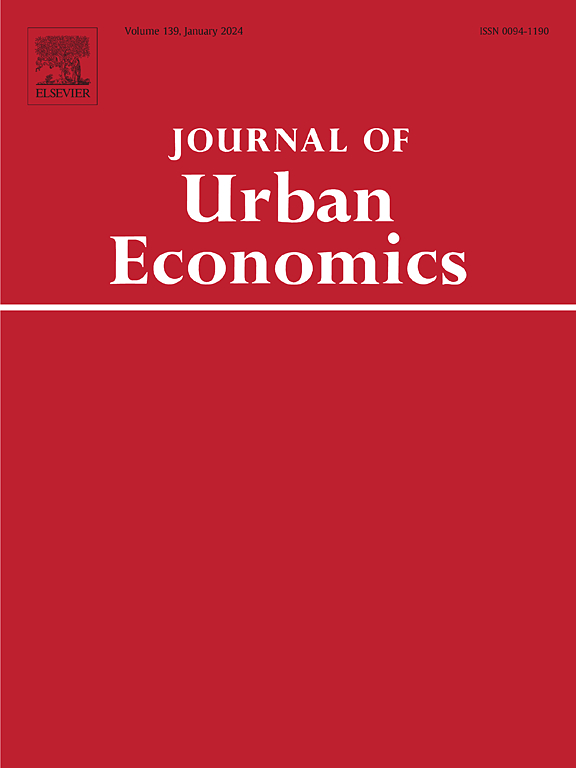城市在工业化过程中提高了技能吗?从农村向城市迁移的证据
IF 4.8
1区 经济学
Q1 ECONOMICS
引用次数: 0
摘要
工业化进程通常与城市化以及生产力和技能方面的巨大城乡差距有关。这些差异在多大程度上是由生活在城市地区对职业成就的直接影响或移居城市的移民积极自我选择的结果造成的?在本文中,我们利用特殊的瑞典纵向数据,使我们能够使用交错处理差异估计器估计19世纪80年代至30年代瑞典工业化期间城乡迁移对职业成就的影响。我们将城市溢价的大约一半归因于生活在城市地区的直接影响,而另一半则是由自我选择进入城市所驱动的。居住在城市的直接影响有三分之一可以用静态效应来解释,这反映了城市的优势,而其余的则是动态效应的结果,因为随着时间的推移,个人在城市地区进入了更高技能的职业。本文章由计算机程序翻译,如有差异,请以英文原文为准。
Did cities increase skills during industrialization? Evidence from rural-urban migration
The process of industrialization is typically associated with urbanization and a large urban-rural gap in productivity and skills. To what extent were these disparities driven by the direct impact on occupational attainment of living in an urban area or the result of the positive self-selection of migrants moving to cities? In this paper, we leverage exceptional Swedish longitudinal data that allow us to estimate the impact of rural-urban migration on occupational attainment during Sweden’s industrialization from the 1880s to the 1930s using a staggered treatment difference-in-differences estimator. We attribute roughly half of the urban premium to a direct impact of living in an urban area, whereas the other half is driven by self-selection into cities. A third of the direct impact of residing in cities is explained by a static effect, reflecting the urban advantage, while the rest is the result of a dynamic effect as individuals move into higher-skilled occupations over time in urban areas.
求助全文
通过发布文献求助,成功后即可免费获取论文全文。
去求助
来源期刊

Journal of Urban Economics
Multiple-
CiteScore
10.60
自引率
4.80%
发文量
64
期刊介绍:
The Journal of Urban Economics provides a focal point for the publication of research papers in the rapidly expanding field of urban economics. It publishes papers of great scholarly merit on a wide range of topics and employing a wide range of approaches to urban economics. The Journal welcomes papers that are theoretical or empirical, positive or normative. Although the Journal is not intended to be multidisciplinary, papers by noneconomists are welcome if they are of interest to economists. Brief Notes are also published if they lie within the purview of the Journal and if they contain new information, comment on published work, or new theoretical suggestions.
 求助内容:
求助内容: 应助结果提醒方式:
应助结果提醒方式:


